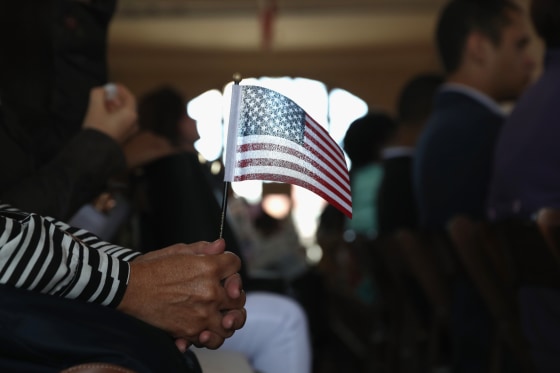With recent media reports raising the specter of a closer presidential election between Donald Trump and Hillary Clinton than many experts had previously anticipated, a new report from the University of Southern California’s Dornsife Center for the Study of Immigrant Integration sheds light on an emerging segment of the immigrant population that can have an important impact in competitive states.
“Though it may seem like small numbers, we analyzed the margins of victory in the 2012 elections and found that several key contests were decided by margins of victory that are similar to or smaller than current recently naturalized share of potential voters, including Florida, Virginia, and North Carolina,” said Justin Scoggins, Data Manager and report co-author.
RELATED: Something in the Numbers: Citizen Applications at Highest in Four Years
The report, Rock the (Naturalized) Vote II: The Size and Location of the Recently Naturalized Voting Age Citizen Population, is a follow-up to a similar study conducted by the center in 2012 and can be read on their website.
Citing academic research on voter turnout and the immigrant population, the report says that “immigrant registration and voting rates will be higher in the upcoming election than in 2012”.
Naturalized immigrant Latinos and Asians having higher voter turnout rates than their U.S.-born co-ethnic counterparts. Naturalization rates are up 21 percent in the first two quarters of 2016, so the report comes at a timely moment.
"It is important for policymakers and political figures to recognize the importance of the immigrant vote in order to realize a more civil, balanced, and solutions-oriented conversation about immigration policy." said one of the report's co-author, CSII Director and USC professor Dr. Manuel Pastor.
The report points to a new map interface developed by the center that can be used to locate concentrations of naturalized citizens. With the margins of victory in some states being close to or exceeded by the naturalized immigrant population, tools designed to locate naturalized citizens as an important contribution to political campaigns and organizations.
"As we approach many voter registration deadlines these next few weeks, CSII released this data to show where these potential new voters could have impact at a pretty detailed level of geography," said Magaly N. López, Data Analyst and co-author.

